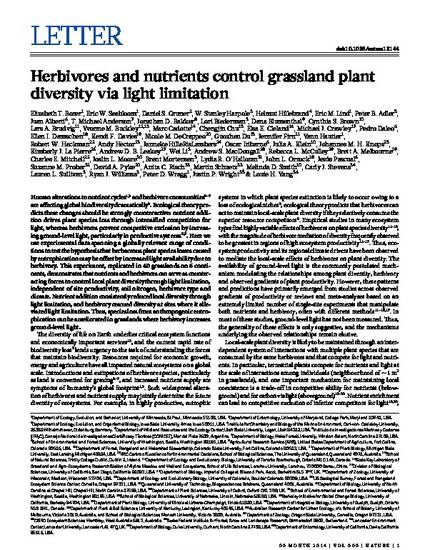
Human alterations to nutrient cycles1, 2 and herbivore communities3, 4, 5, 6, 7 are affecting global biodiversity dramatically2. Ecological theory predicts these changes should be strongly counteractive: nutrient addition drives plant species loss through intensified competition for light, whereas herbivores prevent competitive exclusion by increasing ground-level light, particularly in productive systems8, 9. Here we use experimental data spanning a globally relevant range of conditions to test the hypothesis that herbaceous plant species losses caused by eutrophication may be offset by increased light availability due to herbivory. This experiment, replicated in 40 grasslands on 6 continents, demonstrates that nutrients and herbivores can serve as counteracting forces to control local plant diversity through light limitation, independent of site productivity, soil nitrogen, herbivore type and climate. Nutrient addition consistently reduced local diversity through light limitation, and herbivory rescued diversity at sites where it alleviated light limitation. Thus, species loss from anthropogenic eutrophication can be ameliorated in grasslands where herbivory increases ground-level light.
Available at: http://works.bepress.com/lori_biederman/5/

This article is from Nature 508 (2014): 517, doi:10.1038/nature13144.